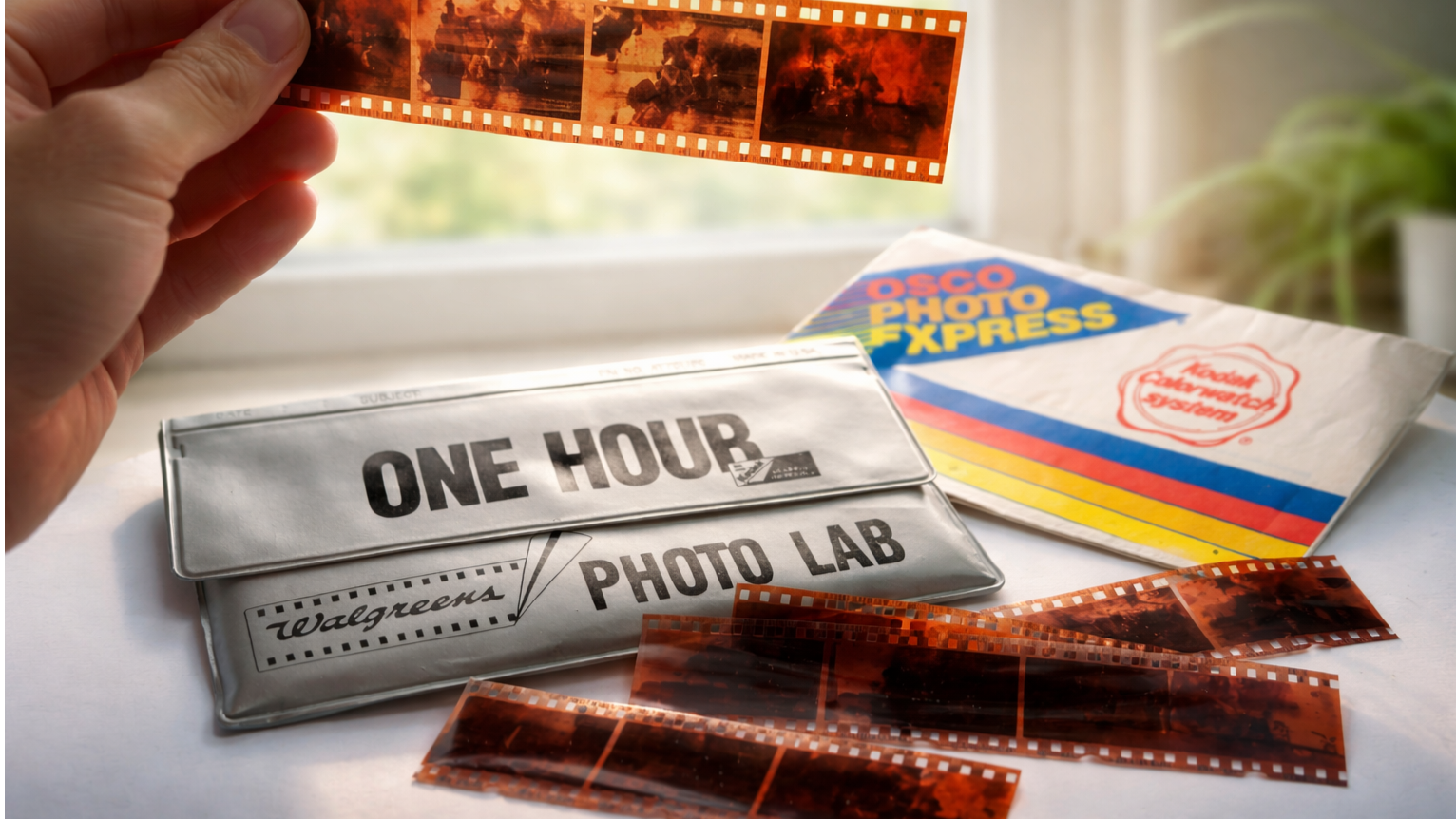I put the iPhone 17 vs iPhone 16 through a 7-round face-off — here’s the winner
How big an upgrade is it?
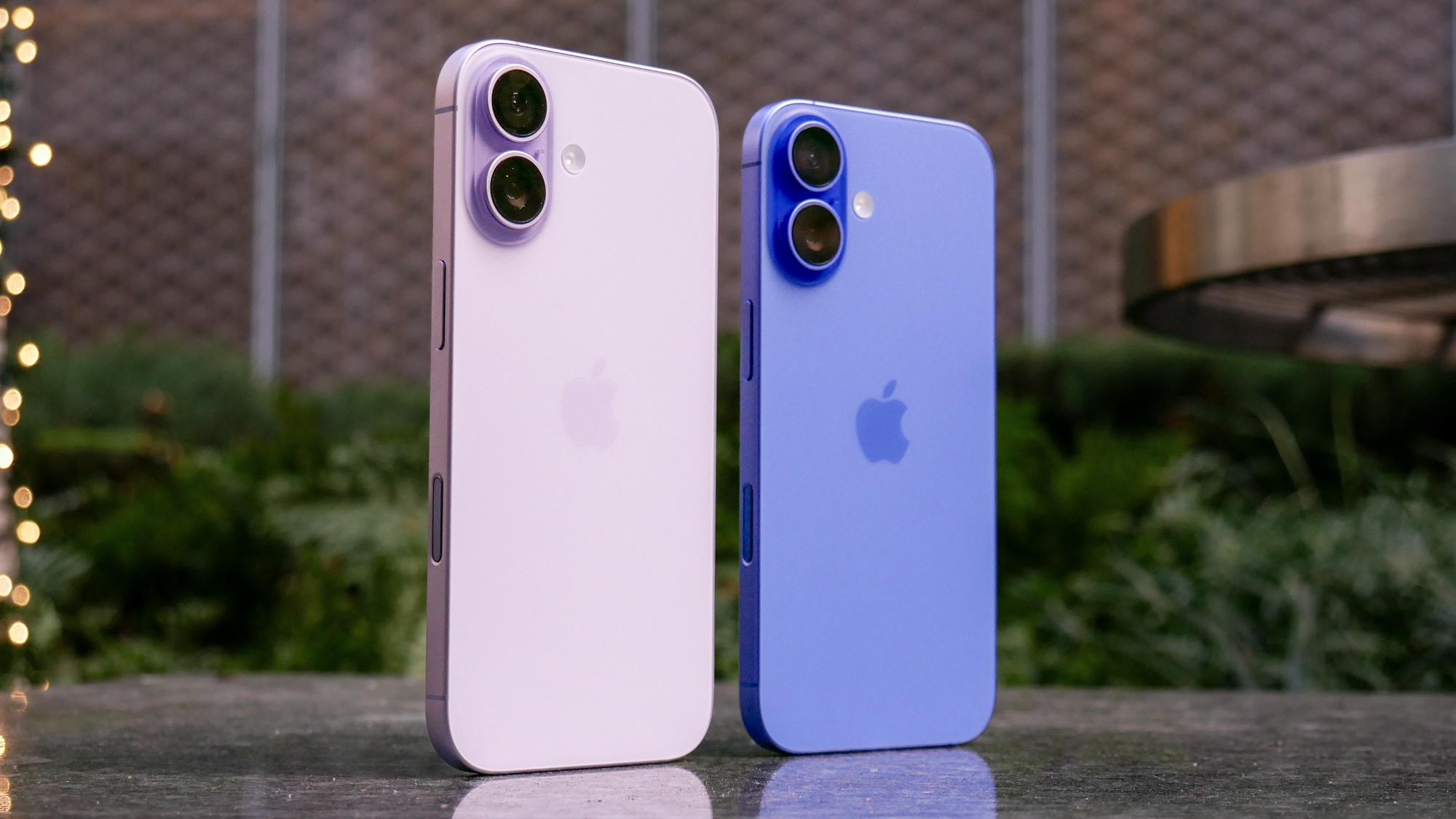
I’ve spent a great deal of time testing out the iPhone 17. After testing it out for a week, I kept on saying how delightful it was for Apple to keep its price at $799 while giving it double the starting storage capacity. That’s why an iPhone 17 vs iPhone 16 face-off is necessary to really uncover what improvements Apple has given to its latest model.
Another thing that really stood out to me after testing the iPhone 17 for a month is how much its upgraded 120Hz refresh rate makes a huge difference. However, it’s going to take more than a smoother looking display to validate the iPhone 17’s superiority over its predecessor.
Apple also focuses heavily on the cameras, with upgrades made to the ultrawide and front-facing cams of the iPhone 17. That’s one area I’m eager to see play out because it’ll prove if it’s a best camera phone contender. Without diving deeper into all of the categories I’ll be judging here, I have a strong suspicion on which one will come out on top with this iPhone 17 vs iPhone 16 comparison.
iPhone 17 vs iPhone 16: specifications
iPhone 17 | iPhone 16 | |
Starting price | $799 / £799 / AU$1,399 | $799 / £799 / AU$1,399 |
Display | 6.3-inch OLED | 6.1 inch OLED |
Refresh Rate | 120Hz | 60Hz |
CPU | A19 | A18 |
Storage | 256GB, 512GB | 128GB, 256GB, 512GB |
Rear cameras | 48MP main (f/1.78), 48MP ultrawide (f/2.2) | 48MP main (f/1.6), 12MP ultrawide (f/2.2) |
Front camera | 18MP (f/1.9) | 12MP (f/1.9) |
Charging Speed | 35W wired, 25W wireless (MagSafe) | 27W wired, 25W wireless (MagSafe) |
Colors | Lavender, Sage, Mist Blue, White, Black | Black, White, Pink, Teal, Ultramarine |
Size | 5.89 x 2.81 x 0.31-inches (149.6 x 71.5 x 7.95mm) | 5.8 x 2.8 x 0.31 inches (147.6 x 71.6 x 7.8mm) |
Weight | 6.24 ounces (177 grams) | 6 ounces (170 grams) |
iPhone 17 vs iPhone 16: Price and availability
When it was released on September 20, 2025, the base storage option of the iPhone 16 retailed for $799. It also came in five different colors: Black, White, Pink, Teal, and Ultramarine. Even though I’ve always been a fan of the base iPhone’s price, Apple makes it much better with the new.
That’s because Apple ups the base storage of the iPhone 17 to 256GB, while still carrying over the same $799 starting cost as before. However, Apple kept the same number of color options: Lavender, Sage, Mist Blue, White, and Black.
Since the iPhone 17’s release on September 19, 2025, Apple lowered the price of the iPhone 17 to $699. While the price cut is warranted, the fact that you get double the storage amount is more than enough to justify shelling out the money for the latest model.
Winner: iPhone 17
Get instant access to breaking news, the hottest reviews, great deals and helpful tips.
iPhone 17 vs iPhone 16: Design

Look quickly and you might not realize the changes Apple makes with the iPhone 17. There’s nothing dramatically new with the iPhone 17’s design, as it still features the same vertically arranged camera system on the back, Camera Control button on the side, and metal meets glass construction.
The changes are miniscule, but it’s almost unbelievable how Apple was able to increase the display size of the iPhone 17 from 6.1 to 6.3 inches without being any larger than the iPhone 16. Side by side, the iPhone 17 is a hairline taller than the iPhone 17 — yet I doesn’t feel it any bigger when I hold it.
Just as before, Apple leans on the same contoured aluminum frame construction with a matte-like glass rear casing. However, one advantage for the iPhone 17 is that it uses Ceramic Shield 2 for the front glass. This makes it stronger and more scratch resistant than the standard Ceramic Shield glass used by the iPhone 16.
I will say, though, that I much prefer the bolder, more vibrant colors of the iPhone 16. The Aquamarine has a much deeper tone than the Mist Blue version with the iPhone 17.
Winner: iPhone 17
iPhone 17 vs iPhone 16: display

The iPhone 17 has a larger 6.3-inch OLED display, while the iPhone 16 has a 6.1-inch screen. That 0.2-inch difference is important because of the engineering Apple needed to achieve without dramatically increasing its size. This is due to the skinnier bezels around the iPhone 17’s display, whereas they’re thicker with the iPhone 16.
Another important quality I want to point out is how the iPhone 17’s display is brighter. I thought the 1,348 nits of brightness produced by the iPhone 16 was strong, but the iPhone 17 eclipses it with a peak brightness of 1,505 nits in our testing. When I play the same video on YouTube while it’s sunny out, I can visibly see the iPhone 17’s display is brighter.
| Row 0 - Cell 0 | iPhone 17 | iPhone 16 |
Display size | 6.3-inch OLED | 6.1-inch OLED |
sRGB (%) | 111.3% | 112.2% |
DCI-P3 (%) | 80.2% | 79.5% |
Delta-E | 0.20 | 0.27 |
Peak Brightness | 1,505 nits | 1,348 nits |
Finally, one of the biggest selling points for the iPhone 17 is the fact that its refresh rate gets upgraded to 120Hz. The difference is immediate as scrolling through the iPhone 17 is noticeably smoother. It doesn’t end there either, as many games I frequently play perform more fluid thanks to this faster refresh rate.
Winner: iPhone 17
iPhone 17 vs iPhone 16: Cameras
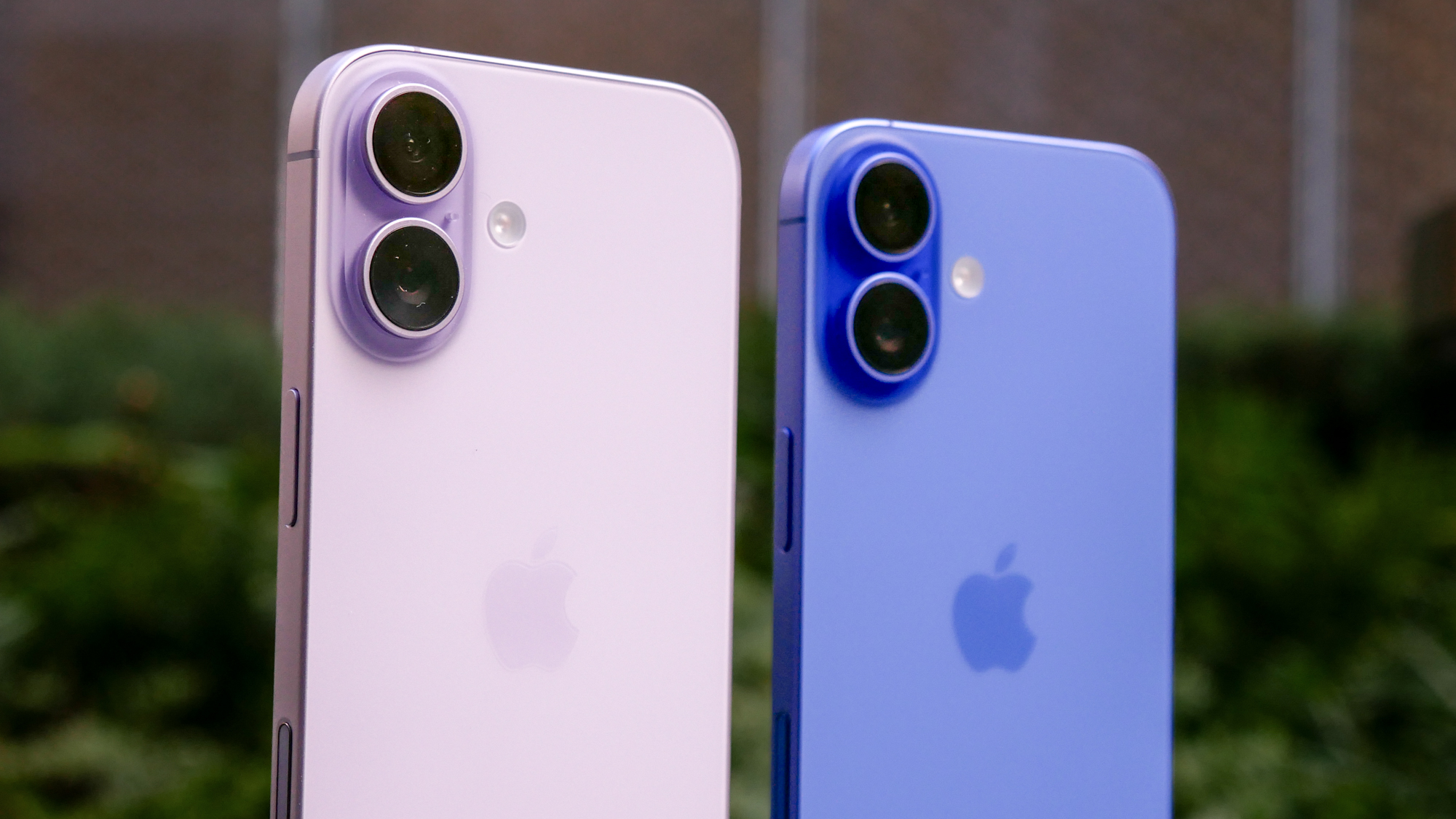
Now this is my favorite part of this iPhone 17 vs iPhone 16 face-off because I’m big on camera performance. While they both employ a dual-camera setup, the hardware’s actually different on them — giving the newer model a big advantage.
The iPhone 16 features a 48MP main camera paired with a 12MP ultrawide. In comparison, the iPhone 17 gets an upgraded 48MP ultrawide. But while the 48MP main camera of the iPhone 17 is similar on paper, the aperture actually goes down to f/1.78. This isn’t a big deal, but the f/1.6 aperture of the iPhone 16’s main shooter technically absorbs more light in the same amount of time.
Additionally, it’s worth pointing out the difference between their front-facing cameras. The iPhone 16 sticks to the same 12MP selfie shooter Apple’s been using for eons now, while the iPhone 17 finally gets a much deserved 18MP Center Stage camera upgrade.
With the sun to my right, I snapped the photos above to test the iPhone 17 vs iPhone 16 dynamic range performance to see how they deal with contrasting light sources. From what I can see, both phones manage to deliver the same exposure across the scene — including the areas in shadow, like the one side of the brown building in the middle and the trees beneath it.
Likewise, I don’t see much of a difference in how the iPhone 17 and iPhone 16 produce colors, as the shots of the oranges and lemons inside of Whole Foods look identical.
I will admit that both phones take exceptional looking macro shots. Just take a peek at the red flower above as they capture plenty of detail. Upon close inspection, though, the iPhone 17 delivers more sharpness and definition — while its brighter look makes it look more dramatic than the iPhone 16.
The beauty of the iPhone 17’s new 18MP Center Stage camera is that it has a wider field of view, so it’s way more suitable for group shots. Another quality I like about the Center Stage camera is that it gives me access to the same framing options regardless of me holding it in portrait or landscape.
Considering that the iPhone 17’s shot is wider (cropped to show their differences in the shot above), it’s pretty impressive that it retains the same level of sharpness and detail as the iPhone 16.
When it comes to portraits, I don’t see a lot of difference in the shots I captured of myself above. Both phones manage to get the bokeh just right, giving it an accurate look with how the extended part of my arm increasingly gets blurrier as it gets closer to my hand holding the phones.
The iPhone 17 handles panoramas better in my opinion. While the overall shots capture the scene nicely, the iPhone 16 suffers from looking slightly blurier — with more noise in the shot.
Neither phone has a dedicated telephoto camera, so all zooming is done through their main cameras and sensor cropping. At 2x zoom, though, the iPhone 17 pulls in slightly better details. If you look towards the middle at the parking sign, I can make out the words “commercial vehicles only” better with the iPhone 17.
I’ve always been impressed by the low light performance of iPhones, but there’s clearly an improvement with the iPhone 17. If you look at the shot above of the tree in my backyard that’s in shadow, the iPhone 17 produces the brighter picture.
The last thing I want to show is the difference between their ultrawide cameras. Even though the iPhone 17 has a pixel crunching 48MP sensor, it doesn’t really boost the amount of detail it captures. Instead, the improvement that I see pertains to the way the textures look throughout the shot. For example, there’s almost this speckled appearance with the blue walkway in the foreground — which is something I also see with the red umbrellas.
When it comes to capturing footage at 4K 30fps with their main cameras, the iPhone 17 and iPhone 16 perform very similarly to one another. I like the amount of detail and sharpness from their footage, along with how they adapt to the change in light when I pan across the street to a spot where there’s more sun.
However, the one improvement I see is with the stabilization of the iPhone 17. From the moment I start to walk forward, I can see that the iPhone 16 has a bit more jitter.
Furthermore, the iPhone 17 benefits from another new feature that Apple introduces with the new lineup. It’s called Dual Capture, which finally lets users shoot video with both the front and rear cameras simultaneously. You won’t find this mode with the iPhone 16, which I suspect is due to the amount of processing power that’s needed for it.
Overall, the iPhone 17 is the better camera phone for both still shots and video. The biggest differences between them come from the iPhone 17’s better 18MP Center Stage camera, smoother image stabilization with video and stronger low light performance. Nevertheless, I wouldn’t count out the iPhone 16 because its main camera behaves very similar to the iPhone 17
Winner: iPhone 17
iPhone 17 vs iPhone 16: Performance
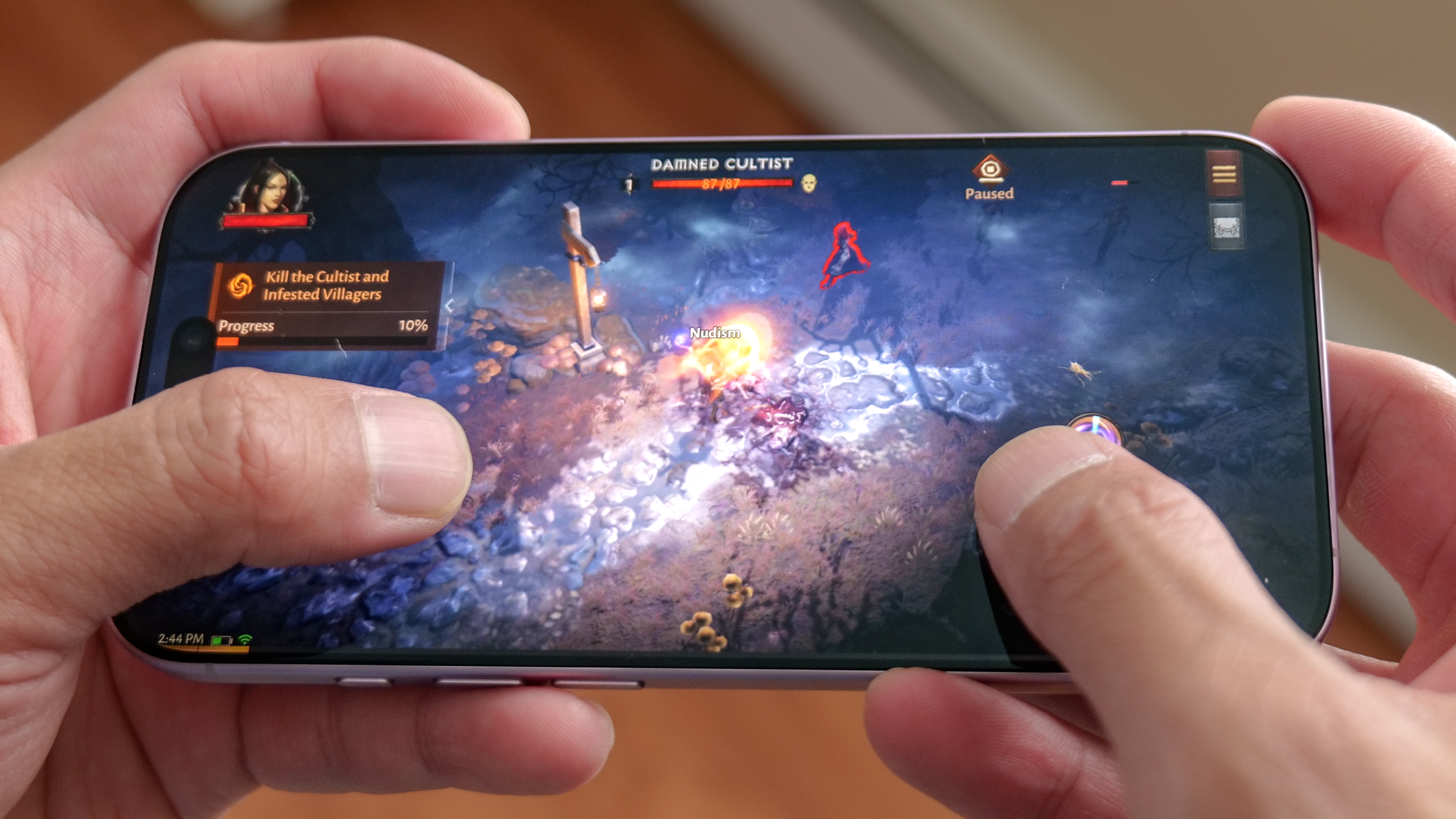
Even without digging through all the numbers, I can tell right away that the iPhone 17 has the better processing performance. GeekBench 6 scores heavily favor the iPhone 17 and its newer A19 chip, but the most telling difference is how I interact with both phones.
From scrolling around the home screen, to launching apps, the iPhone 17’s response is much tighter and more fluid. I’m inclined to say it’s largely due to its 120Hz refresh rate, but it’s more than that.
| Row 0 - Cell 0 | iPhone 17 | iPhone 16 |
Processor | A19 | A18 |
Geekbench (single core/multicore) | 3,701 / 9,460 | 3,301 / 8,033 |
WildLife Original Unlimited (fps) | 130.97 | 98.23 |
Adobe Premiere Rush (mins:secs) | 0:22 | 0:22 |
Playing through a session with Diablo Immortal and Age of Origins provides more evidence of the iPhone 17’s superior performance. If you look at results from 3DMark’s Wild Life Original Unlimited test, the iPhone 17’s average of 130.97 fps is way faster than the 98.23 fps of the iPhone 16.
Combining the increased performance of the A19 chip with its smoother 120Hz refresh rate, the iPhone 17 feels like a totally different phone. Don’t get me wrong, the iPhone 16 and its A18 chip is still a formidable package for every day tasks, but the iPhone 17 performs all the same actions with finesse.
Winner: iPhone 17
iPhone 17 vs iPhone 16: Battery life and charging
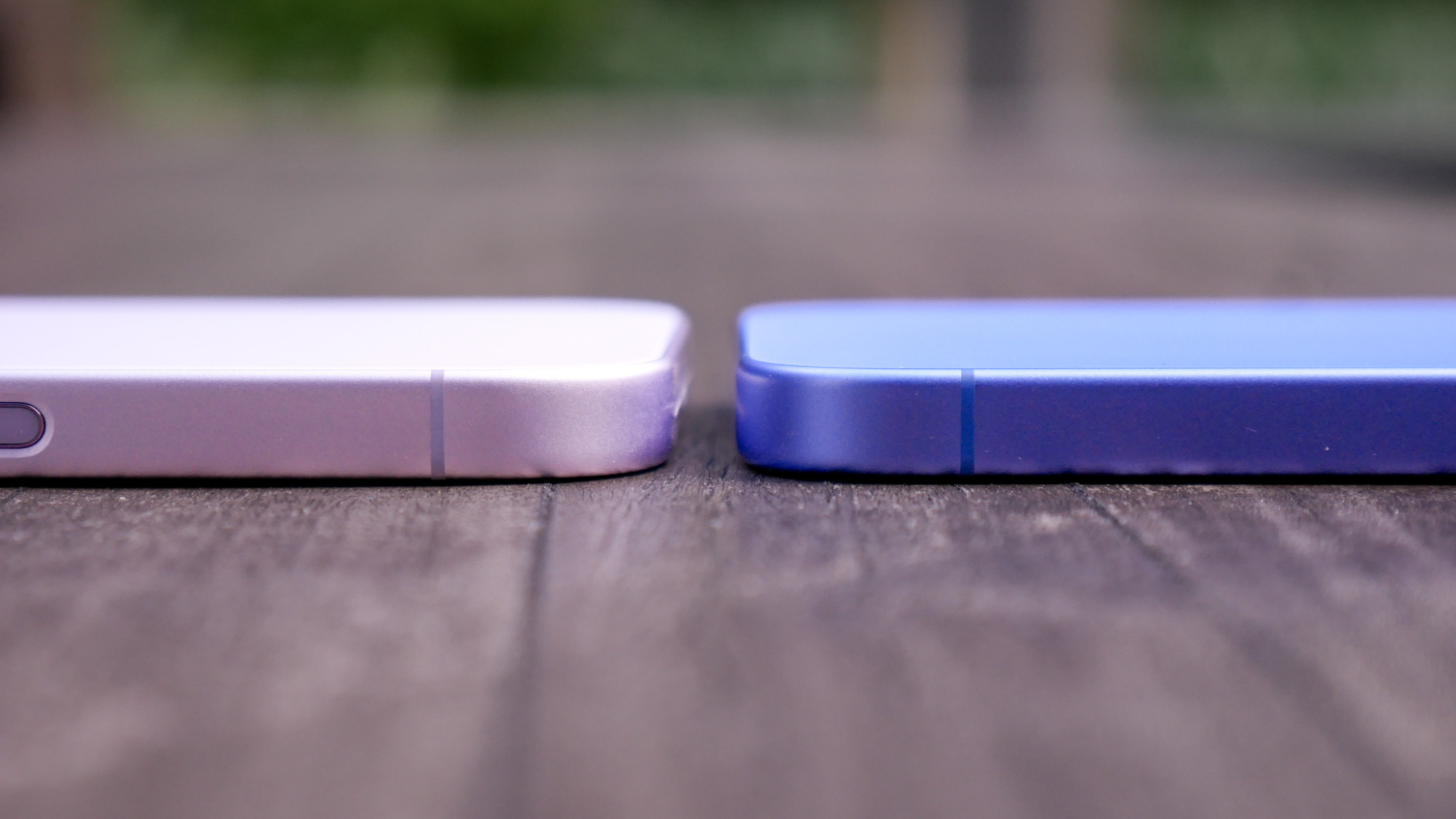
Apple never directly reveals the battery capacities of its iPhones, but I can imagine there’s still a bigger one in the iPhone 17. In Tom’s Guide’s battery drain test, the iPhone 17 reaches an average time of 12 hours and 47 minutes. I wouldn’t consider that a giant leap, but it’s nonetheless still an improvement over the 12 hours and 13 minutes put up by the iPhone 16 running the same test.
| Row 0 - Cell 0 | iPhone 17 | iPhone 16 |
Battery size | N/A | N/A |
Battery life (Hrs:Mins) | 12:47 | 12:13 |
Wired Charging | 29W | 20W |
Recharge percentage (15 mins) | 39% | 29% |
Recharge percentage (30 mins) | 71% | 57% |
When it comes to my typical phone usage, the iPhone 17 easily carries me through a single day — but it’s often close to depleted right before bedtime. Usually, I like to top it off sometime in the afternoon so that I can reasonably use it without worry during the evening.
Apple also upgraded the charging speed of the iPhone 17 to 29W, which gets it to 39% and 71% after 15 and 30 minutes of charging. Meanwhile, the iPhone 16’s battery charge is much less after the same time — reaching 29% and 59% respectively. That’s due to its maximum charging speed of 20W.
Winner: iPhone 17
iPhone 17 vs iPhone 16: Software and AI
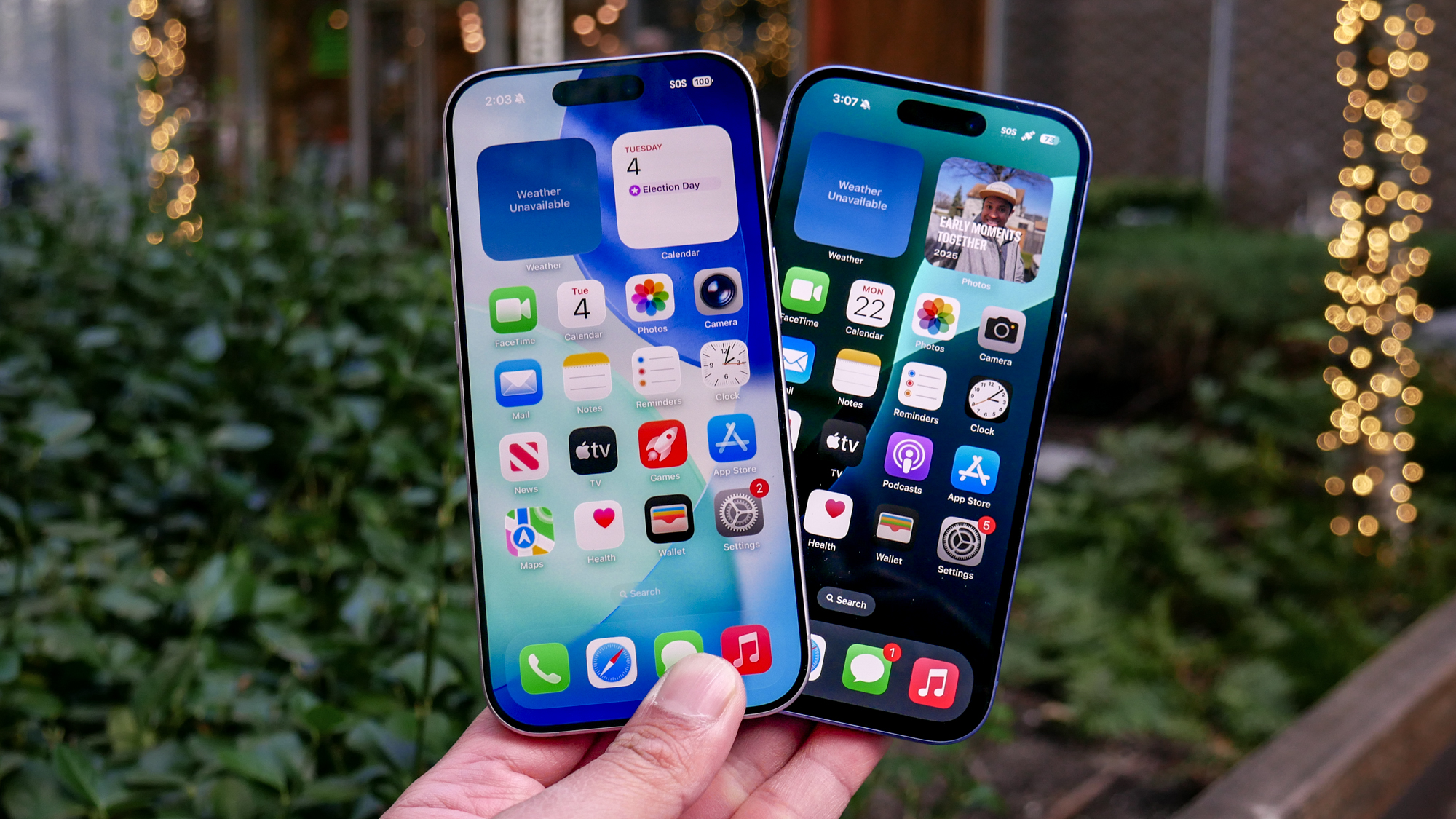
Frankly, this is the one area where it’s a dead tie because at the end of the day, they’re running the same iOS 26 software — with no major exclusives for the newer iPhone 17. Despite that, there’s a lot I love about iOS 26 beyond the updated visual makeover courtesy of Liquid Glass.
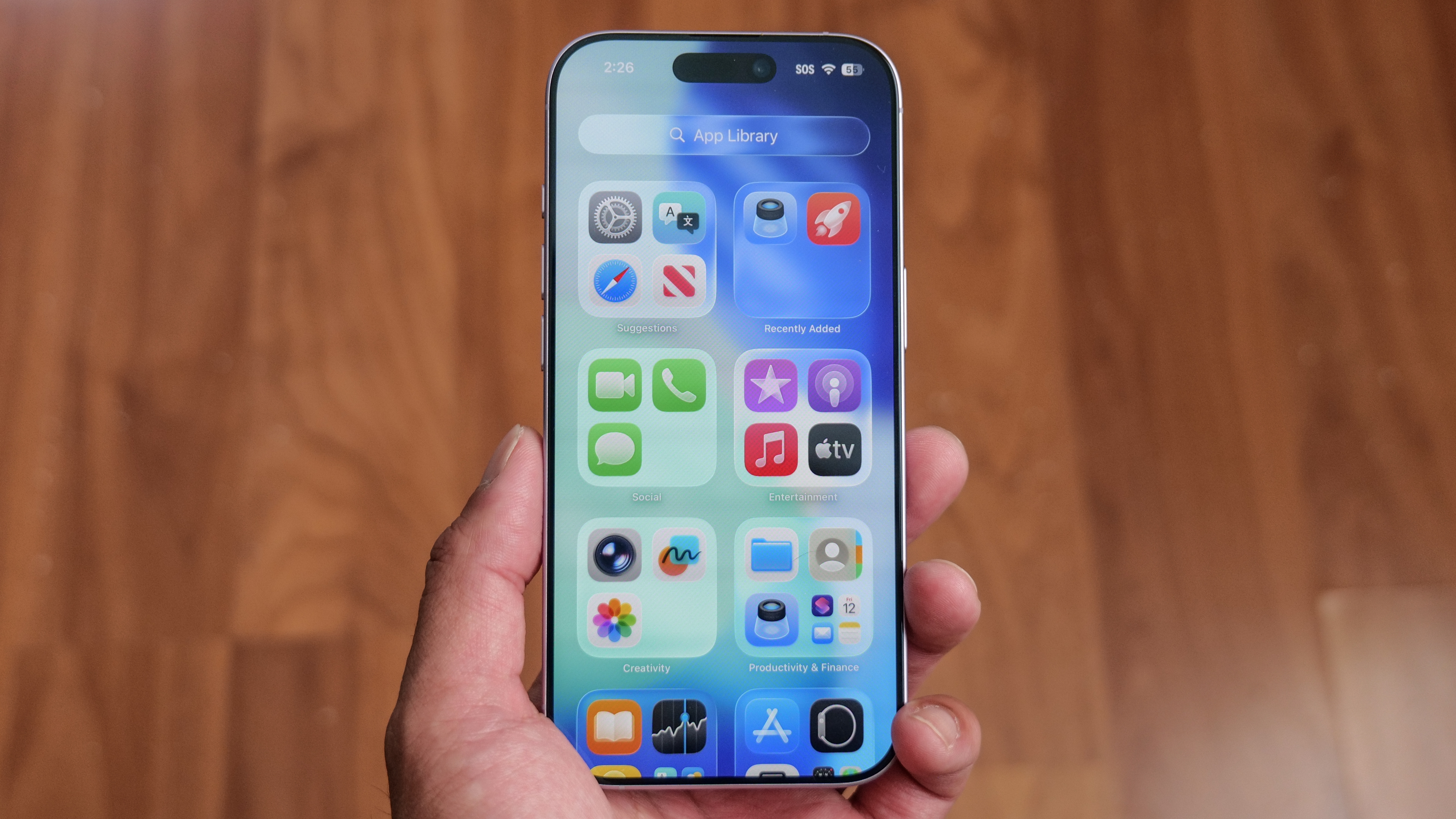
There’s more personalization than ever before, like adding a depth effect to my lock screen wallpaper and giving icons in the home screen that transparent effect. But there are other helpful features that I’m happy Apple has rolled out, like the new Call Screening and Hold Assist features. And while there’s still room for improvement with the former when I compared it to the Pixel 10’s version, Hold Assist works as advertised to tell me when someone is back on the line after being placed on hold.
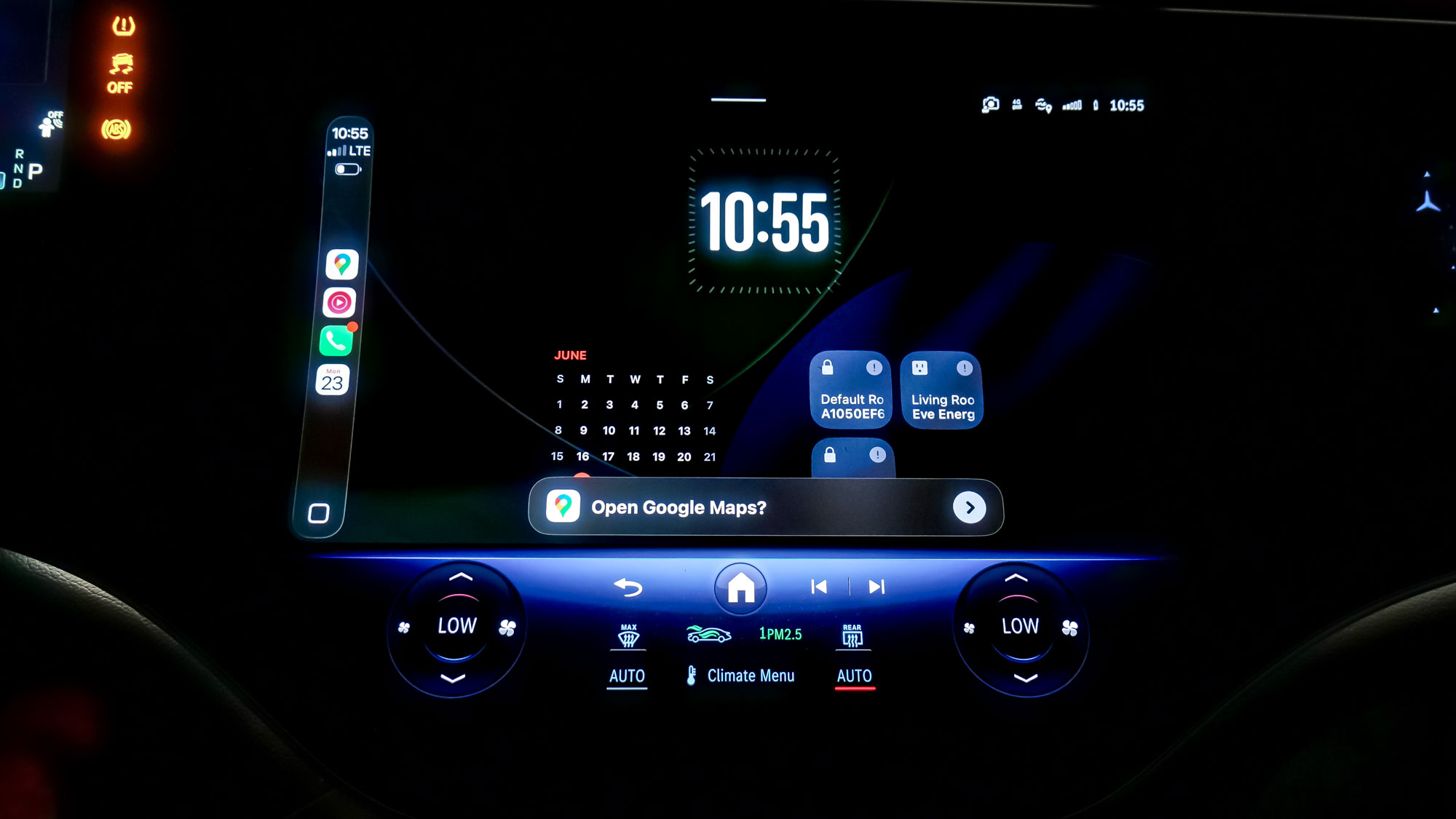
I’ve also tested the streamlined, updated look of the iOS 26 Camera app — which now places many of the settings directly in the app, as opposed to being hidden in the general Settings menu. When I’m driving some of the best electric cars, I like the updated iOS 26 CarPlay experience that brings many useful features straight from the iPhone.
However, I’m a little disappointed with the tepid Apple Intelligence features in iOS 26. The only meaningful addition is how Visual Intelligence is now integrated into the screen shot function, so I can search for stuff I’m looking at on my iPhone. It’s like Circle to Search, but it’s not as intuitive as Google’s implementation. I really thought that Apple would give the iPhone 17 a couple of new AI exclusives, but that’s not the case as both phones offer the same experience. And the new and improved Siri is not expected until the spring of 2026.
Winner: tie
iPhone 17 vs iPhone 16: Verdict

Apart from the software, the iPhone 17 is clearly the better phone — and this year’s upgrades are much more substantial. Even with the $100 savings you’ll get with the iPhone 16, it’s not enough for me to justify going with last year’s model.
The fact that you’re getting double the starting storage, a bigger screen with a faster 120Hz refresh rate, a front-facing camera that has more framing options, and speedier performance out of the A19 chip all point at the obvious here. Frankly, the iPhone 17 is the biggest update in years to the base flagship model.

Follow Tom's Guide on Google News and add us as a preferred source to get our up-to-date news, analysis, and reviews in your feeds.
More from Tom's Guide
- 9 things that still annoy me with Apple's phones after using an iPhone for 18 years
- I shaved for Movember and now my iPhone doesn’t recognize me — here’s how to fine tune Face ID
- Apple's reportedly closing in on a deal to power AI Siri with Google Gemini — what that means for you

John’s a senior editor covering phones for Tom’s Guide. He’s no stranger in this area having covered mobile phones and gadgets since 2008 when he started his career. On top of his editor duties, he’s a seasoned videographer being in front and behind the camera producing YouTube videos. Previously, he held editor roles with PhoneArena, Android Authority, Digital Trends, and SPY. Outside of tech, he enjoys producing mini documentaries and fun social clips for small businesses, enjoying the beach life at the Jersey Shore, and recently becoming a first time homeowner.
You must confirm your public display name before commenting
Please logout and then login again, you will then be prompted to enter your display name.



